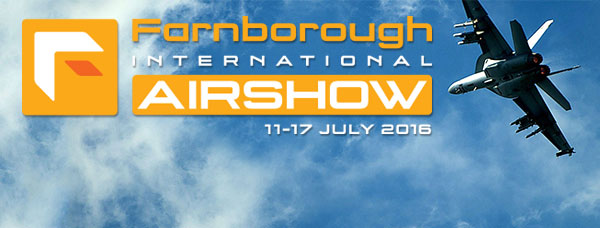
The Lockheed Martin F-35B advanced short take-off and vertical landing aircraft will make its debut at this year’s Farnborough International Air Show. The last combat aircraft in this class to premiere at Farnborough was the Yakovlev Yak-41 (Yak-141) Freestyle more than 20 years ago. How times have changed.
The Freestyle was unarguably a star of what was possibly the largest-ever presence of Russian aircraft at a Western air show at Farnborough in 1992. Along with the Yak-41 a range of other Russian combat aircraft were in attendance, including the MiG-29S and MiG-29M versions of the Fulcrum fighter aircraft, the MiG-31 Foxhound interceptor, Sukhoi Su-35 (Su-27M) multi-role upgrade of the Flanker and Tupolev Tu-22M3 Backfire C medium bomber.

Douglas Barrie, IISS
Today several of these aircraft are being ‘intercepted’ by Western air forces, including those involved in Baltic Air Policing operations, reflecting the deterioration in relations with Moscow since the heady days of the early 1990s. Inevitably, and understandably, the potential impact of the British people’s vote June 23 to leave the European Union will give fuel to conversation and speculation over the course of the trade show.
The immediate consequences of the unanticipated vote to leave has shaken both the political establishment and the British economy. Worthy also of sustained attention, however, is the worsened European security environment, and the possible implications for the continent’s air power needs. A year after the MiG-29OVT thrust vector test-bed was flown at Farnborough 2006, Russian President Vladimir Putin laid out his particular view of international relations at the Munich Security Conference in 2007, including his concerns over NATO ‘expansion.’ Since then, relationships have done nothing to improve.
The US and its allies no longer view Russia as a strategic partner, but a strategic rival. Moscow sees NATO “encroachment” as a clear threat to its security. Unsurprisingly, no Russian combat aircraft are on display at Farnborough this year. Russia, however, has been far from inactive in terms of combat aircraft development. The near collapse of the 1990s has been succeeded for around the past decade by sustained defence investment intended to recapitalise its equipment inventory, replacing ageing and obsolescent systems. The 2008 New Look reform program has been comparatively successful, as has the 2011-2020 state armament programme (GPV). While manufacturing targets have been missed and in-service dates delayed, production numbers are significant.

SU-35
The latest member of the Flanker family to have the Su-35 designation, a follow-on development to the Su-27M/Su-35 shown at Farnborough in 1992, is now in squadron service and made its operational debut in Syria earlier this year. Similarly the Su-34 Fullback long-range fighter-bomber was also deployed as part of the Syrian operation. A total of 80-plus of the Fullback have been delivered to Russia’s Aerospace Forces (VKS), with at least front-line units operating the type. With regard to the Su-35S the first order for 48 has/is nearing completion while an additional 50 are due to be delivered by 2020. Under GPV 2011-2020 the intent appears to have been to acquire 96 Su-35S and 120 Su-34s. The 2011-2020 GPV has now been succeeded by the 2016-2025 programme, which has been forced to make a number of accommodations: part financial, part technical, and part the result of the 2014 annexation of Crimea and continuing conflict with Ukraine.
The loss of Ukraine as a defence industrial partner has required Russia seek to substitute Ukrainian sourced components, delaying some programmes, while development issues have hindered others. Sanctions implemented following the annexation have also hit Russia’s economic performance. The two most significant projects that have been revised are the PAK FA future multi-role fighter requirement and the PAK DA requirement for a successor to the Tu-95 Bear and Tu-160 Blackjack strategic bombers. Procurement of the PAK FA has been slowed, with the 2011-2020 ambition to acquire 60 aircraft by 2020 now reduced to 12 production standard aircraft only, with further deliveries beyond 2020. In the case of the PAK DA, the near-to-medium term focus now appears to be on re-establishing a production line for the Tu-160, with an upgraded version of the aircraft to be produced known as the Tu-160M2. While at least some design work on the PAK DA continues, previous aims in terms of first flight and entry into service of the aircraft have been tempered.
While the Russian Aerospace Forces’ re-equipment programme is making progress, it is worth recognising this is modernisation on a Russian and not a Soviet scale. Also noteworthy is that many of the projects now coming to fruition had their genesis in the 1980s, but were in effect put on hold in the early 1990s as defence expenditure crumbled. Nevertheless the re-equipment programme in combination with poorer security relations with Moscow raises issues for Western air powers. At the basic level in the European context there is now a question as to the size and focus of some of Europe’s main air powers. The UK has already reversed the previous downward trend in cutting squadron numbers by extending the life of early model Typhoon’s to maintain two additional squadrons. The intended pace of the F-35B introduction is being speeded up, albeit only modestly. Offensive and defensive counter-air operations are again of increasing importance in the European sphere. Over the previous decade the emphasis was on expeditionary and counter-insurgency operations in Afghanistan and Iraq.
The increased emphasis on the air-to-air realm is reflected not just in NATO’s Baltic Air Policing operations but also in the increased tempo of activity the Swedish Air Force. Air intercept activity grew steadily in the period from 2013-to-2015. The Swedes are also the first partner nation to introduce the rocket/ramjet powered Meteor beyond visual range missile into their inventory. The Meteor program, led by the UK, provides a successor to the AIM-120 AMRAAM for the Typhoon and Gripen, along with being integrated on the Rafale. The origins of the missile’s operational requirement were in providing a weapon capable of greatly increasingly the no-escape zone against a range of projected potential threat aircraft and systems, some of which have now entered service.
Douglas Barrie was the European mastermind of Defense News when I was editor and now he works for the respected International Institute for Strategic Studies. The core of his job there is analyzing global air power capabilities for IISS’ flagship publication, The Military Balance.
Lockheed Martin projects potential $1 billion loss on classified program
Lockheed CFO Jay Malave said the company currently expects the program to become profitable on an annual basis around the 2028 timeframe.


























